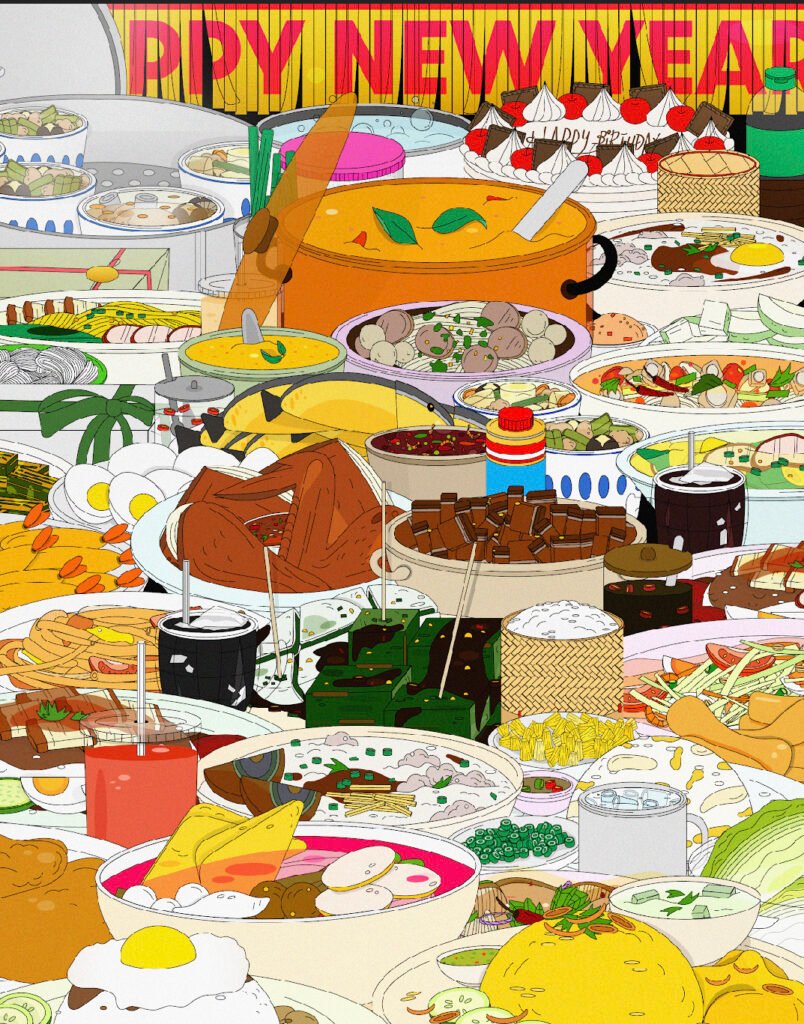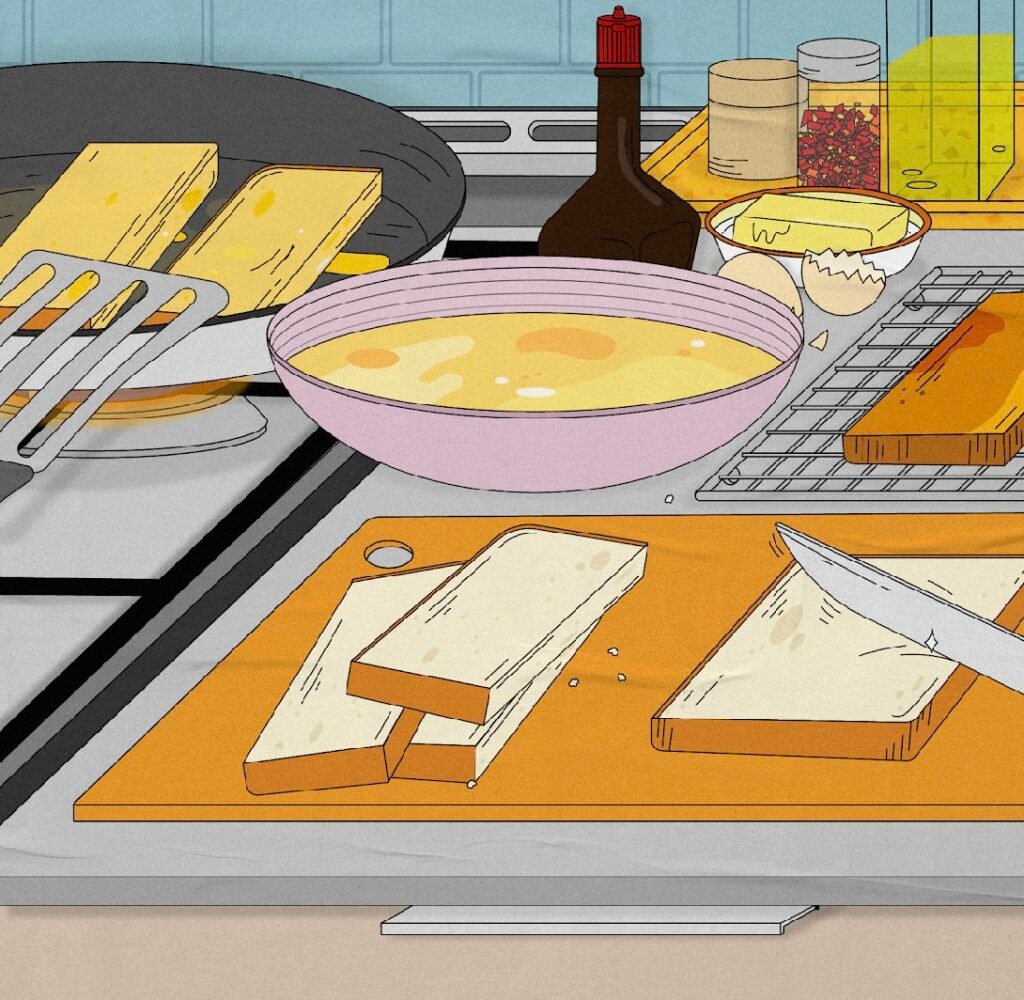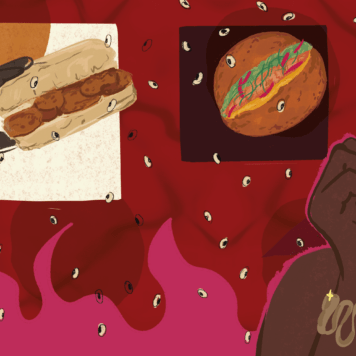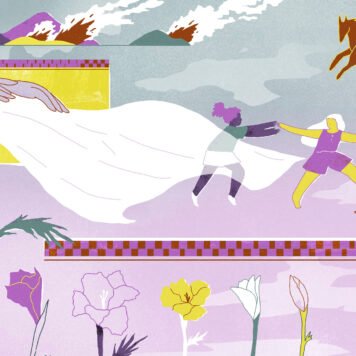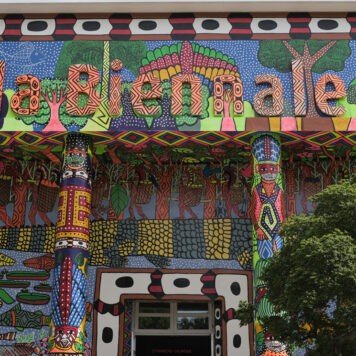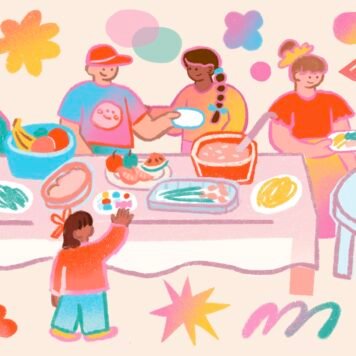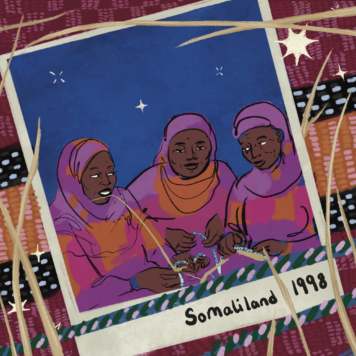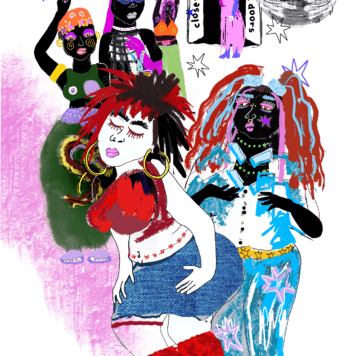Tarn Susumpow is a Brooklyn-based artist with roots in Bangkok, Thailand. She’s working on preserving the everyday story of her family, one vector ingredient at a time.
How has your lived experience shaped your practice?
My work was dismissed a lot because it was “too cute”. I used to take that very personally. It made me feel that I wasn’t good enough. I didn’t find confidence in my work until I found a bigger motivation. Recently, this motivation has come in the form of me wanting to depict scenes from my own memory, in a style that I would want to see it in. Because it was so personal, I was able to let go of the notion of fitting a certain industry standard. Not everything has to be cool or sexy. Not everything has to be created for social engagements. Not everything has to make sense to everyone.
‘Some things deserve to exist’, my former manager Amel once told me, ‘just to take up space.’ I have this ability to turn my own memory into a visual that other people can see — why not use it?
What are some of your biggest influences and motivations in your work? What issues are you passionate about working on?
My motivation is to preserve my family history. Both sides of my family immigrated to Thailand from mainland China in the early 1900s. There was a language barrier that prevented us from keeping records. A few years ago, I realised I didn’t know what my Gong (mother’s father) did for a living. It took my mother, the youngest of seven children, a while to compose her answer.
He did a little bit of everything… He was a tin miner, but the mine eventually ran dry and the big companies left. They lived by the ocean, so sometimes he’d go fishing. They had a small vegetable garden and a few rubber trees. Whatever was not used for or consumed by the family was sold at the market.
I found all of this to be extraordinary. That the tin ran dried in one person’s lifetime. That the now-commercialised beachfront was once a place to go fish for dinner. If I never asked, our family’s history would have just disappeared with each passing generation. But stories about “ordinary” families can still be a great reflection of society and our values.
My work is limited to food illustration right now, but asking my elders what they remember eating growing up has been such a natural way to get them to share more. Every time I draw, I leave behind a little bit more traces of who we are.
Can you tell us more about your focus on food in your work?
I grew up in a very big, tight-knit family in Thailand. We are constantly eating together: while we catch up, while we celebrate, even while we grieve.
Do you know how smells are often associated with a specific memory? This is kind of what food is for me.
When I started drawing food I grew up eating, I started to realise how much there is to tell. Every person and every occasion is tied to a particular dish. We only eat this when it is just me and my dad for lunch and he’s in a hurry. We only eat that when it’s summertime and all the cousins come over on a weekend.
Food is the perfect vehicle for me to tell stories about the people and places that are so deeply personal and meaningful to me.
Where are you based and what excites you about the creative community around you?
I’m currently based in Brooklyn, New York. I am particularly inspired by the food scene here. While I love adventuring for the food itself, in the last few years, I’ve become just as excited to experience new restaurants’ branding and visuals.
I’ve seen a lot of new places that are trying bolder and usually more experimental styles. Some are really immaculate and beautiful, some are deliberately messy and fun. All of them exist outside of the norm of what we’ve come to expect from [insert specific type of] restaurants.
I feel excited to be creating at a time where we can take more risks with how we show up. You are not just Chop Suey font or photos of the beach. You can have more than one dimension.
See more of Tarn’s work HERE
